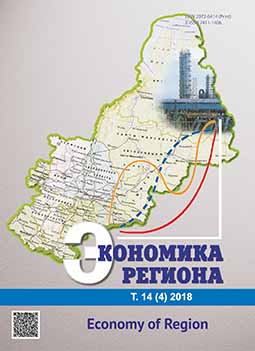Устойчивое развитие северных регионов: демографическое измерение
Sustainable Development of the Northern Regions: Population Dimension
Author(s): Viktor Vilgelmovich Fauzer, Tatyana Lytkina, Andrey Vladimirovich SmirnovSubject(s): Economy
Published by: Институт экономики Уральского отделения Российской академии наук
Keywords: North;sustainable development;demographic factors;indicators;demographic sustainability;indices ranking
Summary/Abstract: The topic of sustainable development in the modern context has emerged due to international reports «The Limits to Growth» and «Our Common Future», the Rio de Janeiro conferences, the «Millennium Declaration» and the document «Transforming our world: the 2030 Agenda for Sustainable Development». The documents noted the importance of developing indicators to measure sustainable development. However, practice has shown that the universal set of indicators at the country and international levels is still has not been developed. In the main systems of indicators of sustainable development, demographic indicators are insufficiently represented. The use of demographic indicators will allow to move to a new assessment — demographic sustainability. Since the early 1990s, more than 35,000 domestic works have been published on the topic of sustainable development, but only 1.3 % of them have been devoted to demographic issues. The article suggests evaluating demographic sustainability according to twenty-five indicators. On the basis of these indicators, we have calculated the integral index of demographic sustainability. It allowed to rank all northern regions according to the degree of sustainability: critical, low, medium, high. From 2000 to 2015, there was an increase in demographic sustainability: there were no regions with critical sustainability. But nowadays, most of the regions are still characterized by low and medium sustainability. We have substantiated that the demographic sustainability of the northern regions can be achieved under the following conditions: slightly expanded population reproduction; the able-bodied part of the population is sufficient to supply the branches of the national economy with labour resources; the number of people entering into labour activity exceeds the outgoing human resources; sex-age proportions are optimal; reduction in the difference in life expectancy between the sexes, a city, a village, separate ethnic groups. Furthermore, the negative migration balance of the territory is formed as a result of the fact that the number of retiring persons older than the working age and who have lost their ability to work exceeds the incoming migration flows from persons of working age. The results of the study can be used as a theoretical and methodological basis for determining the demographic sustainability at different levels of governance.
Journal: Экономика региона
- Issue Year: 14/2018
- Issue No: 4
- Page Range: 1370-1382
- Page Count: 13
- Language: Russian

